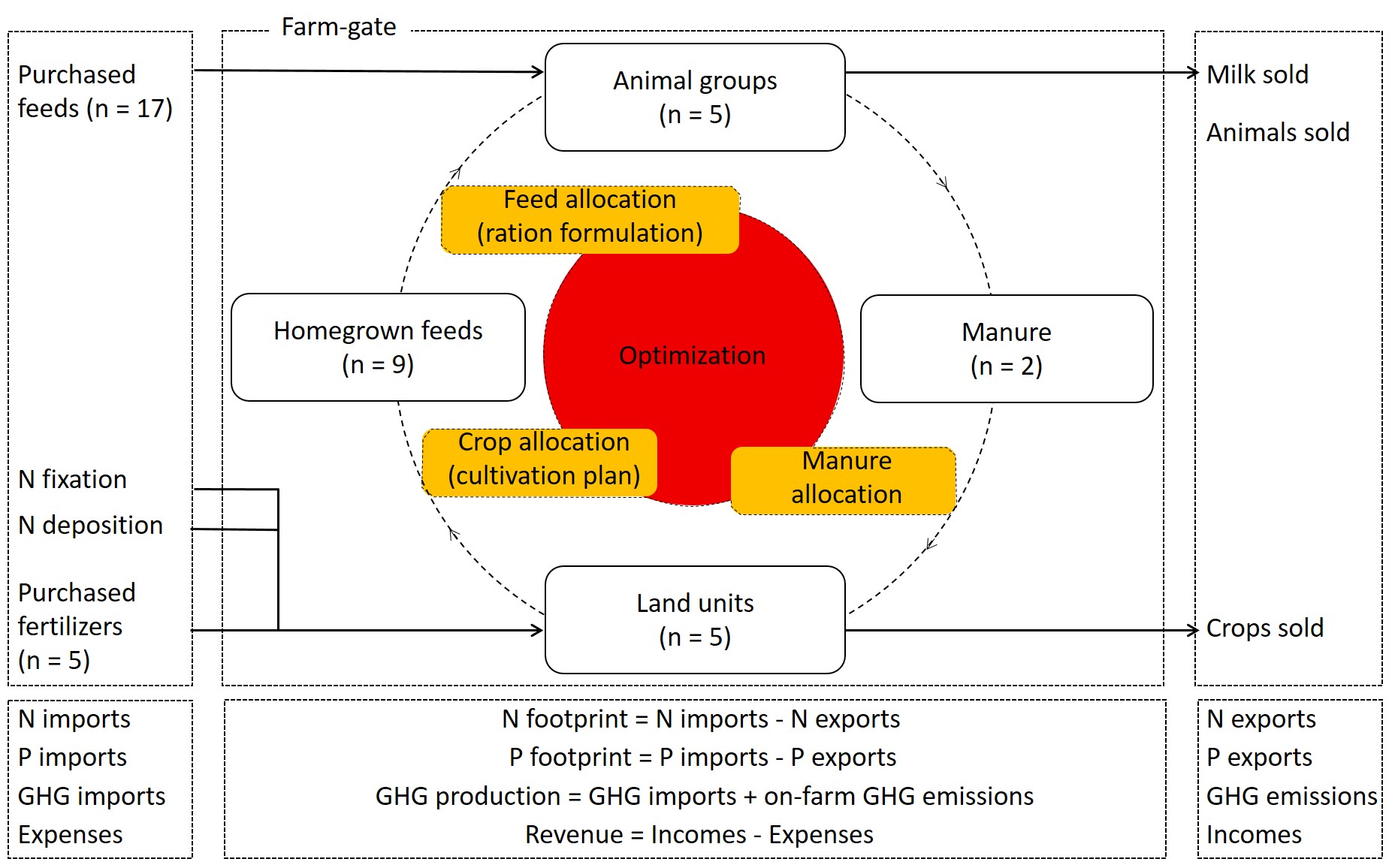Articles scientifiques

- Date de publication : 2019-06-25
Référence
Fournel, S., Charbonneau, E., Binggeli, S., Dion, J.-M., Pellerin, D., Chantigny, M. H., & Godbout, S. (2019). Optimal housing and manure management strategies to favor productive and environment-friendly dairy farms in Quebec (Canada): Part II. GHG mitigation methods. Transactions of the ASABE 62(4): 973-984.
Documents
Information Complémentaire
Mot(s) Clé(s)
Lait Fumier Environnement
Résumé
Several strategies are available for mitigating greenhouse gas (GHG) emissions associated with dairy manure management in barns, storage units, and fields. For instance, incorporation of manure into the soil, solid-liquid separation, composting, enclosed manure storage, and anaerobic digestion have been identified as good options. However, these strategies are not widely adopted in Canada because clear information on their effectiveness to abate the whole-farm GHG footprint is lacking. Better information on the most cost-effective options for reducing on-farm GHG emissions would assist decision making for dairy producers and foster adoption of the most promising approaches on Canadian dairies. In this context, whole-farm modeling provides a tool for evaluating different GHG abatement strategies. An Excel-based linear optimization model (N-CyCLES) was used to assess the economics and the nutrient and GHG footprints of two representative dairy farms in Québec, Canada. The farms were located in regions with contrasting climates (southwestern and eastern Québec). The model was developed to optimize feeding, cropping, and manure handling as a single unit of management, considering the aforementioned mitigation options. Greenhouse gas emissions from the different simulated milk production systems reached 1.27 to 1.85 kg CO2e kg-1 of corrected milk, allowing GHG reductions of up to 25% compared to the base system described in Part I. Solid-liquid separation had the greatest GHG mitigation potential, followed by the digester-like strategy involving a tight cover for gas burning. However, both options implied a decrease in farm net income. Manure incorporation into the soil and composting were associated with high investment relative to their GHG abatement potential. The most cost-effective option was using a loose cover on the manure storage unit. This approach lessened the manure volume and ammonia-N volatilization, thereby reducing fertilizer and manure spreading costs, increasing crop sales and profit, and enhancing the whole-farm N and GHG footprints. Consequently, covering the manure tanks appears to be an economically viable practice for Québec dairy farms.



